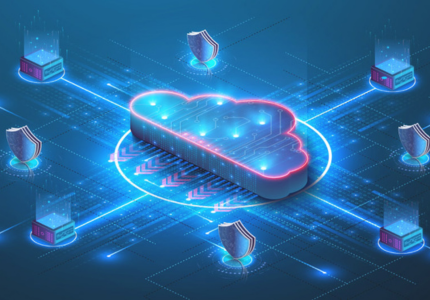IoT devices and applications have particular needs that a range of cellular connectivity options can meet. Device manufacturers, IoT companies and connectivity providers must weigh up significant factors such as power type and consumption, required data throughput, latency and international coverage to arrive at the most appropriate technology. Here, we dive into Cat-1 BIS with insight into its characteristics and how it compares against alternatives.
What is Cat-1 BIS?
LTE Cat-1 BIS, to give it the full title, is a mature and globally supported standard 4G technology. It was introduced within 3GPP* Release 13 in 2016 using existing LTE networks but designed to operate with a single antenna. In this way, it is a streamlined version of LTE Cat-1 that optimises cost and space.
Cat-1 BIS is often spoken about as an option for IoT devices and applications transitioning from 2G and 3G as these networks are phased out. In that category, it sits alongside other cellular options, most notably the low power wide area network (LPWAN) services LTE-M and NB-IoT. Comparing with those two technologies, hardware costs and power consumption are slightly higher with Cat-1 BIS and it has to be said that the single antenna will limit its range (distance from cell tower) more than it does for NB-IoT and LTE-M. This is unlikely to be a concern in areas with dense population and cell coverage.
This technology also has other benefits such as bandwidth and latency but also offers more flexible and universal coverage than LPWAN technologies. It enjoys pre-existing roaming agreements which translates into 2,3,4 networks per country in major markets. Companies planning to deploy internationally can also take advantage of the flexibility of eSIM to download network profiles in situ, thereby rolling products off the production line with a single stock keeping unit (SKU) because they can all contain the same SIM type.

Cat-1 BIS vs LTE-M and NB-IoT?
There are, of course, a range of considerations that help determine the suitability of one cellular connectivity type over another. Here, we compare Cat-1 BIS with LTE-M and NB-IoT, across a number of important characteristics including some which are rarely discussed by MNOs or cellular modules vendors :
Data rates
Cat-1 BIS boasts faster connection speeds of up to 10 Mbps -download (up to 5Mbpsupload) making it an ideal technology for applications that demand higher data throughput or are mission or business critical. In comparison, LTE-M, whilst supporting higher data rates than NB-IoT, operates at up to 1Mbps for both upload and download and although slower, is actually sufficient for applications where high data rates are not a concern
Latency
When it comes to latency, Cat-1 BIS has the upper hand with a faster response time, at around 50-100 milliseconds, compared to LTE-M at ~100 milliseconds. This is crucial for applications that require immediate feedback and faster response times without delays that could compromise performance or safety.
Power
Cat-1 BIS is suitable for battery, rechargeable battery or mains powered devices but has higher energy consumption compared to LTE-M and NB-IoT. All three technologies have power saving modes (PSM, eDRX) but as a rule of thumb, NB-IoT is most power efficient, followed by LTE-M then Cat-1 BIS. All that said, it often becomes very marginal with advantages sometimes negated by other energy management factors. For example, Cat-1 BIS operates at a higher data rate and transmit times are significantly shorter.
Signal penetration and stationary/mobile
NB-IoT was designed for indoor and underground operation and has that advantage. However, NB-IoT is for stationary devices only, while both Cat-1 BIS and LTE-M can support devices that need to maintain connectivity on the move, such as those in fleet management or asset tracking.
Multi-country deployments
Cat-1 BIS leads in international coverage and roaming. This makes it a preferred choice for global and cross border deployments. NB-IoT and LTE-M’s global reach is uneven and faces roaming challenges, therefore would be a consideration for those looking to deploy more regional applications.
Radar Chart: Which low power technology depends on a range of factors

When would Cat-1 BIS be the best choice
Cat-1 BIS is a versatile and reliable choice for a broad range of applications, especially those that are delivering mission or business critical data. It suits low power IoT devices that require higher speed or two-way data transfers or mobility. With support for two-way voice it’s ideal for lone worker devices, , independent living devices or elevator call systems for emergency communications. (Note VoLTE support will be required when 2G and 3G networks are gone.)
Cat-1 BIS also connects a range of application types including eScooters and eBikes with rechargeable or swappable batteries. Where devices support many products across widespread geographical areas, Cat-1 BIS enables a lower total cost of ownership with a single SKU manufacturing approach, access to multiple mobile network operator networks in all target markets and support for over-the-air fleet management.
Asset tracking is another area where Cat-1 BIS can provide suitable connectivity. It supports devices on the move and offers consistent 4G coverage so businesses can be confident of connectivity for assets that need to be tracked across international boundaries without risk of downtime.
Applications that monitor people’s safety and security at work and in the home have traditionally used SMS/voice/data services on 2G or 3G. With these networks sunset, Cat-1 BIS provides an alternative connectivity solution for these applications which include wearables, healthcare monitors as well as the lone worker devices and emergency call systems already mentioned.
In summary, Cat-1 BIS is a powerful option for IoT solutions that need a balanced approach to connectivity, ensuring efficient performance across diverse and demanding use cases.

Understand your options
For everything you need to know about Cat-1 BIS, download our fact sheet.
Wireless Logic can give you an expert assessment of your connectivity needs, to discover the optimal options for your business, get in touch to discuss.
* The 3rd Generation Partnership Project (3GPP) comprises a number of standards organisations that develop specifications for cellular telecommunications technologies.






